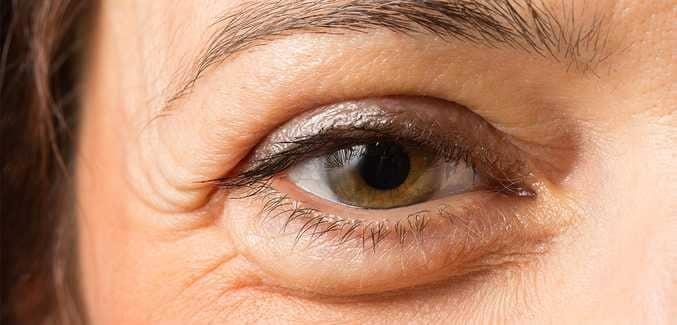
Inflammation of the lower eyelid is a highly irritating and common condition.
You may experience puffy eyelids along with other symptoms.
Due to the protective cover provided by the eyelids, the eyelid layer is more likely to be exposed to external agents.
This is detrimental to the health of the eyelids. Contact with bacteria, viruses, and allergens, as well as irritating substances, can cause inflammation of the lower eyelid.
To examine the eye structure properly, it is critical to visit an ophthalmologist if the lower eyelid is inflamed.
Corneal inflammation is sometimes present, which is caused by Blepharitis.
The first reason that causes the puffy bottom eyelid is a common eye condition called Blepharitis, characterized by inflammation of the edge of the eyelids, which results in your eyelids being red, swollen, irritated, and itchy.
Blepharitis can result from fat secreted by the meibomian glands.
The collection of lipids on the edge of the eyelid can lead to bacteria spreading and, finally, infection.
Blepharitis can be uncomfortable. But it isn’t contagious and usually doesn’t cause lasting damage to your eyes.
Keeping your eyelids clean and removing makeup before bed can help prevent Blepharitis.
You may take measures to manage your symptoms even if Blepharitis typically doesn’t go away entirely. Once it does not go away, you can seek help from your doctor.
Ophthalmologists can perform a physical eye examination to test for Blepharitis. Your eyelids, lashes, and eyes will all be closely examined by the doctor during the examination. They might need light or a unique magnifying device.
Like acne pimples, a style is a red bump on the edge of the eyelid that is painful and is the other cause of the puffy bottom eyelid.
It appears when a tiny sebaceous gland gets blocked or infected with bacteria or bacteria accumulation. A Hordeolum is a medical word for a style.
Most people suffer from style at some point, regardless of gender and race. Due to the more prominent sebaceous glands in adults compared to children, they will be more vulnerable to obstruction, and as a result, the style becomes more common in adults than in children.
Style lasts for one or two weeks; in some cases, you can treat it yourself, but in others, you may require medical treatment.
Although style is not contagious, it is better to keep your hand washed before and after touching it.
The leading cause of puffy lower eyelids is an eye infection, which results in fluid retention in the eye tissues and, as a result, edema of the eyelids.
In most cases, bottom eyelid puffiness comes along with other symptoms such as Ocular redness, Itching, Eye secretions or pain.
Time matters in the treatment of an eye infection.
Treating eye infections as soon as possible is crucial to stop germs from spreading to the cornea and other fragile eye structures.
It is recommended to consult an ophthalmologist as soon as possible once you suffer from an eye infection.
Chalazion, also known as a meibomian cyst, is a bump on the inside of the eyelid and causes the bottom eyelid to be puffy.
As opposed to a style, the chalazion does not cause pain. A Meibomian gland blockage is a reason for this ball in the eye. With the help of these glands, eyes are kept moist.
The ball becomes firmer and resembles a sebaceous cyst. The chalazion does not develop on the edge of the eyelid as styles do.